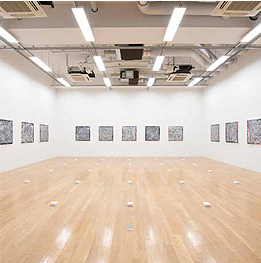The doctoral degree program at MAU has been structured by reorganizing and consolidating the fine arts and design majors of the master's degree program into a single major in art and design. The art and design course in the doctoral degree program covers three interacting, intersecting domains: production of art, design and configuration, and theory and history of art and design. While belonging to one of these domains, students will have ongoing access to knowledge and stimulation from the others. The three areas of study are independent, and at the same time organically linked.

前壮一郎 Studies in Production of Art
Studies in Production of Art
Here students explore a variety of topics through the production of artworks, including perceptions, values, modes of expression, materials, techniques and the history of artistic expression, and seek out new, universal possibilities for expression.
As artistic approaches, students will not only employ two-dimensional forms of expression such as painting (Japanese painting, oil painting, printmaking etc.), three-dimensional expression (sculpture, 3D modeling) and spatial modeling: they will explore projects involving collaboration with other areas of study, and formative arts fields such as imaging arts and installation, adding a variety of media to the mix and exploring the possibilities for new integrated realms of expression that encompass all these fields.
Studies in Design and Configuration
This field of study aims to build better relationships between people, objects and information in contemporary society, targeting the environments composed of these elements and using superlative technologies and information to form environments.
Environment formation encompasses fields such as communication design, product design, craft design, spatial design, architecture, imaging arts and information design.
Studies in Theory and History of Art and Design
Here students research the history and theory of the formative arts (fine arts, architecture, design, crafts, media arts etc.). The areas encompassed by historical and theoretical research in the formative arts are currently expanding, and collaboration with the adjoining sciences is essential. Here students will also conduct research on issues in the practices of producing art, and the influence of society on the production of art, and vice versa. By opening up studies in history and theory, rather than confining their status to that of narrow specialties, we take a fresh look at the meaning of the formative arts.
The aim here is to train not only academic researchers to work in the realm of the formative arts, but also people who will contribute to education in the formative arts, including the production of art, art criticism, and the work of art galleries and other institutions.
